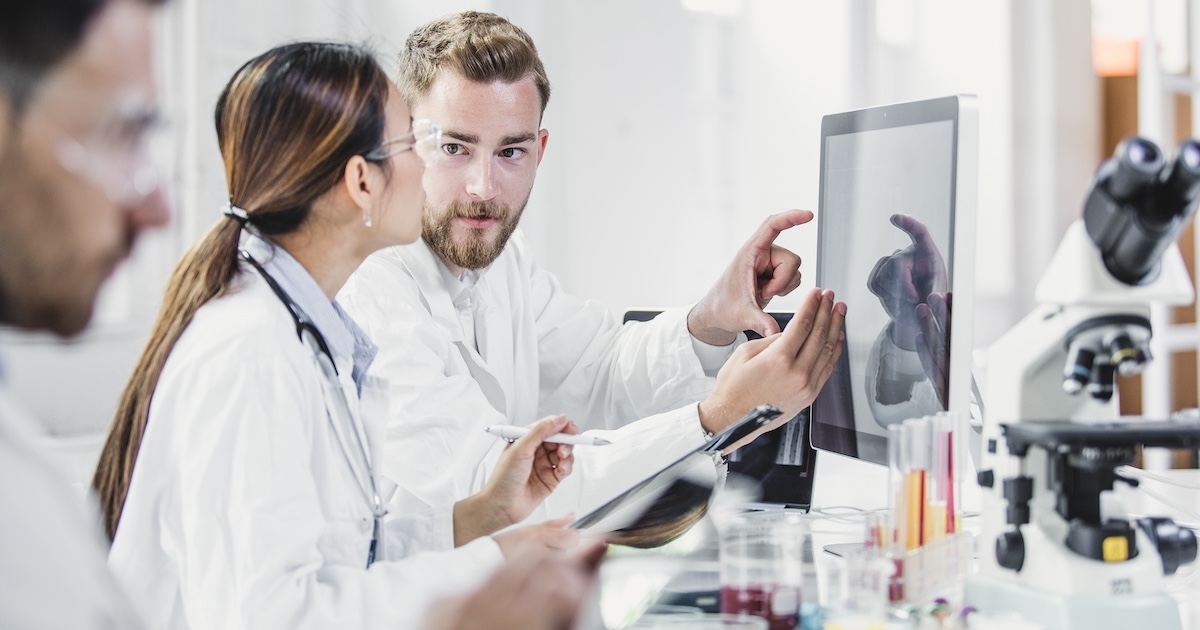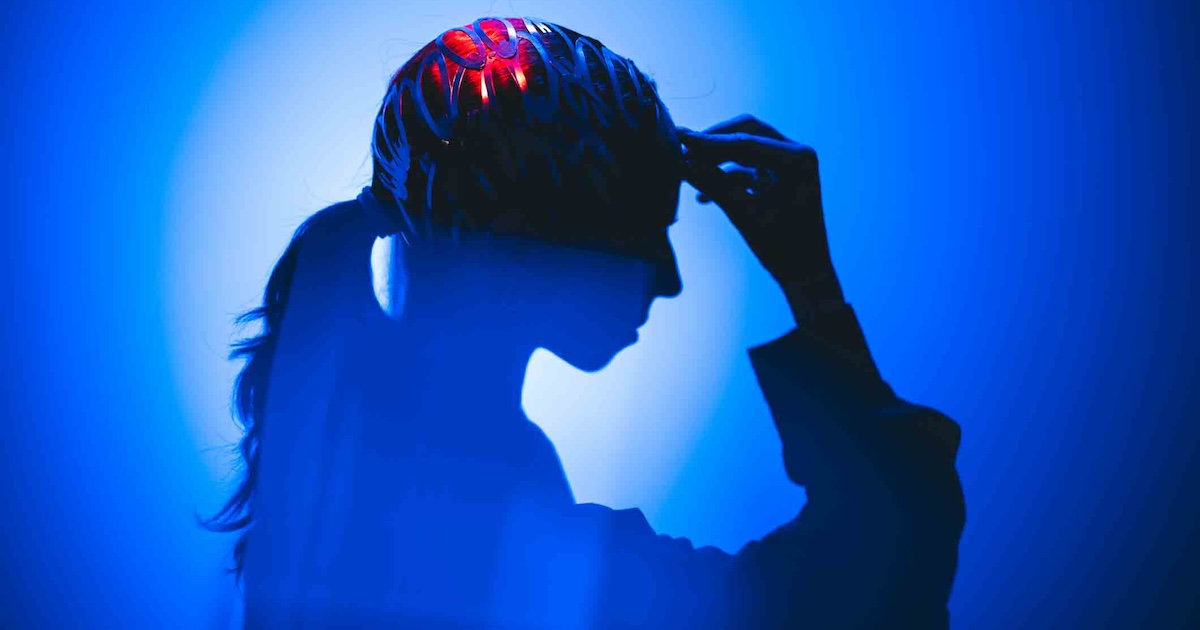The illusion of mind over matter is poised to become even more rooted in the public’s eye.
Indeed, the healthcare community knows that the brain is just another organ, and as such, mapping the latent power of a patient’s brainwaves could produce new treatment breakthroughs.
As EEG science advances, those who deal with the mind - notably psychiatrists and psychologists - are turning to the technology for solutions. A number of applications are assessing EEG changes related to depression and anxiety, for instance, and the U.S. Food and Drug Administration has cleared an EEG diagnostic tool for attention deficit disorders, setting the stage for new algorithms that rely on EEG as the primary diagnostic.
On a daily basis neuro-feedback is being used to treat patients with PTSD, ADHD, TBI (Traumatic Brain Injury), epilepsy, Parkinson’s, sleep Apnea and even ALS.
While a full 24-channel EEG is still far too difficult to be applied by a non-professional, patients can use a four-channel system. Three companies - Advanced Brain Monitoring, BrainPaint and Emotiv - are delving into these areas with EEG mobile solutions.
Advanced Brain Monitoring
Advanced Brain Monitoring has such a device. Weighing 3 ounces, the EEG reader is Bluetooth-equipped, so users can transmit results to a tablet or laptop.
Advanced Brain Monitoring has designed a real-time system to analyze metrics for drowsiness and fatigue. The software classifies a person on a scale ranging from ‘highly engaged’ to ‘sleep onset,’ using auditory feedback such as a tactile buzzer clipped to the user's shirt to send an alert.
“It has been used by pilots while flying,” Advanced Brain Monitoring founder Chris Berka said.
In psychiatry, an analyst typically makes an evaluation by what many would say is a subjective interview with the patient, who might then be put on medications based on the discussion. The next step is usually trial and error, with doctor and patient working together until the right balance is found. Berka said Advanced Brain Monitoring is being used in cases like this to help diagnosis and stratify different psychiatric disorders, with medications prescribed accordingly.
The patient uses the device at home or the readings can be taken right in the office. One can envision having a globe-trotting patient with his psychiatrist half way around the world still able to monitor various treatment outcomes.
BrainPaint
In certain cases, the brain can improve outcomes even without the active participation of the patient. And BrainPaint’s take on EEGs is a bit unique in that the patient is barely a participant in creating better outcomes. Rather, it is the brain itself seeking homeostatic balance that will make the proper corrections.
“We are training the brain, not the mind,” said BrainPaint co-founder and president Cora Scott. “Homeostasis is the body’s mechanism to stay in balance,” and it is the brain that helps the rest of the body keep in balance.
BrainPaint records brain activity on its portable EEG system. Readouts are sent to the BrainPaint software to guide feedback. BrainPaint uses individualized protocols for issues such as ADHD, PTSD, TBI, migraines, insomnia, depression and anxiety.
While a majority of providers see their patients in a professional setting - mental health or addiction centers or at the office of physicians, psychologists and chiropractors - BrainPaint offers a mobile program for use at home, with a PhD supervising, for those greater than 50 miles from an available office.
Personalized protocols are based on answers to 90 questions and used to track symptoms. The idea is to train the brain by giving it feedback. Scott compares it to learning to ride a bicycle in that the new rider can’t see or feel gravity but the brain masters the state of balance.
“They can do it themselves,” Scott explained, “with a headband.”
Emotiv
A ten-year-old company and one of the EEG neuro-feedback pioneers, Emotiv figured prominently in a major partnership just last week, when Accenture and Philips unveiled a proof of concept system to give ALS patients control of ordinary functions like turning on lights or the TV by brain wave direction.
Emotiv does not market its devices to any specific group. Rather, the company presents its products and outlines what they are capable of, thereby allowing other groups to interpret the technology.
“It is a contextualized EEG system,” said Kim Du, vice president of corporate development, adding that it has been used to optimize performance, learning disabilities and medical research.
One of the more novel uses of the technology is in focus groups. Following a calibrating process to understand how each individual’s brain waves fit into a database of readouts from a sample group, patterns that typically signify someone becoming excited, bored, frustrated or engaged, for example, are measured as the group watches an advertisement.
But Emotiv is also about advancing the field. Its next-generation product will include a hydration process to turn dry sensor readings into wet readings without the intervention of an expert technician.
The “hydro-filter takes the water from a person’s own sweat or from the humidity in the atmosphere to improve the signal from the EEG,” said Du. Dry sensors generate more signal noise than wet, Du added.
The road ahead
Mobile EEGs hold great promise to improve patient outcomes and reduce healthcare costs.
More and more data is being collected — not only on patients when they undergo a significant medical event but now thanks to brain activity. And these EEG products make it possible to gather information during a patient’s healthy, day-to-day routine activities, ideally enabling healthcare providers to foresee a problem before it happens.
As the country transitions from a fee-for-service healthcare system to a preventive healthcare model, the wisdom of one of our oldest clichés - “an ounce of prevention is worth a pound of cure” - is perhaps more evident than ever.
Ephraim Schwartz is a freelance writer based in Burlington, Vt. Schwartz is a recognized mobile expert and columnist, having spent 15 years as Editor-at-Large for InfoWorld, half of them covering the mobile space. Prior to that he was Editor-in-Chief of Laptop Magazine.
Related articles:
Are providers waking up to the possibilities of sleep sensing technologies?
Product roundup: 10 mobile apps for evidence-based medicine
What the patient-doctor visit needs most: More structure


